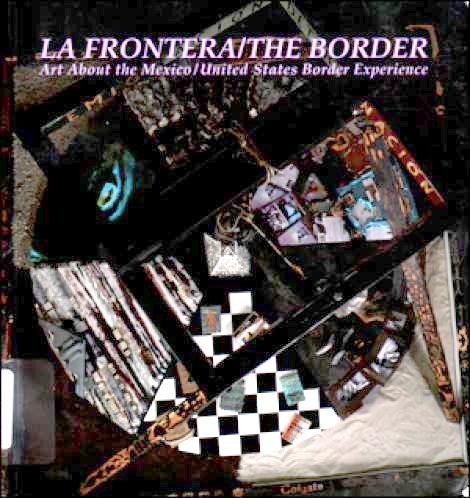1989

The cover of the catalogue for the La Frontera/The Border: Art about the Mexico/United States Border Experience exhibition. Image courtesy of Museum of Contemporary Art, San Diego
The city of San Diego, California, has a unique multicultural community due to its proximity to the Mexican border, which also can create tension and issues related to immigration and cultural appropriation. To address some of those concerns, in 1989 the then-called La Jolla Museum of Contemporary Art (now known as the Museum of Contemporary Art, San Diego) received a $250,000 grant from the National Endowment for the Arts for a three-year, cultural-exchange project between the United States and Mexico, with a focus on the San Diego/Tijuana region.
The museum was one of only seven institutions in the country, and the only California museum, to receive awards from the NEA's Special Artistic Initiatives grant fund. The museum's grant was also the largest award, with the next highest amount, $100,000, going to the Houston Museum of Fine Arts. The project, called "Dos Ciudades/Two Cities," included exhibitions, residencies, commissions, publications, performances, films, symposiums, lectures, and educational activities.
Museum director Hugh Davies said, "We decided to design a project based around what we do well and are interested in, and something that addresses where we live." Project curator Madeline Grynsztejn said artists for the exhibition would be considered from the entire 1,900-mile U.S.-Mexico border. The 11-member advisory committee included artists and administrators—primarily from San Diego and Tijuana—such as Pedro Ochoa Palacio, director of the Centro Cultural Tijuana, and San Diegan Michael Schnorr, a member of the Border Arts Workshop.
The project led to a collaboration between the museum and San Diego’s Centro Cultural de la Raza, home of Border Arts Workshop. The two organizations agreed to co-curate and co-present an exhibition so as to defuse suggestions of co-opting the Centro’s border art concept. The eventual exhibition that was shown in 1993-94 was called La Frontera/The Border: Art about the Mexico/United States Border Experience and included public art projects, workshops, lectures, and symposia. The idea of the La Frontera project was to use art to stimulate discussion on what the border between the U.S. and Mexico really means to the people on both sides of it.

